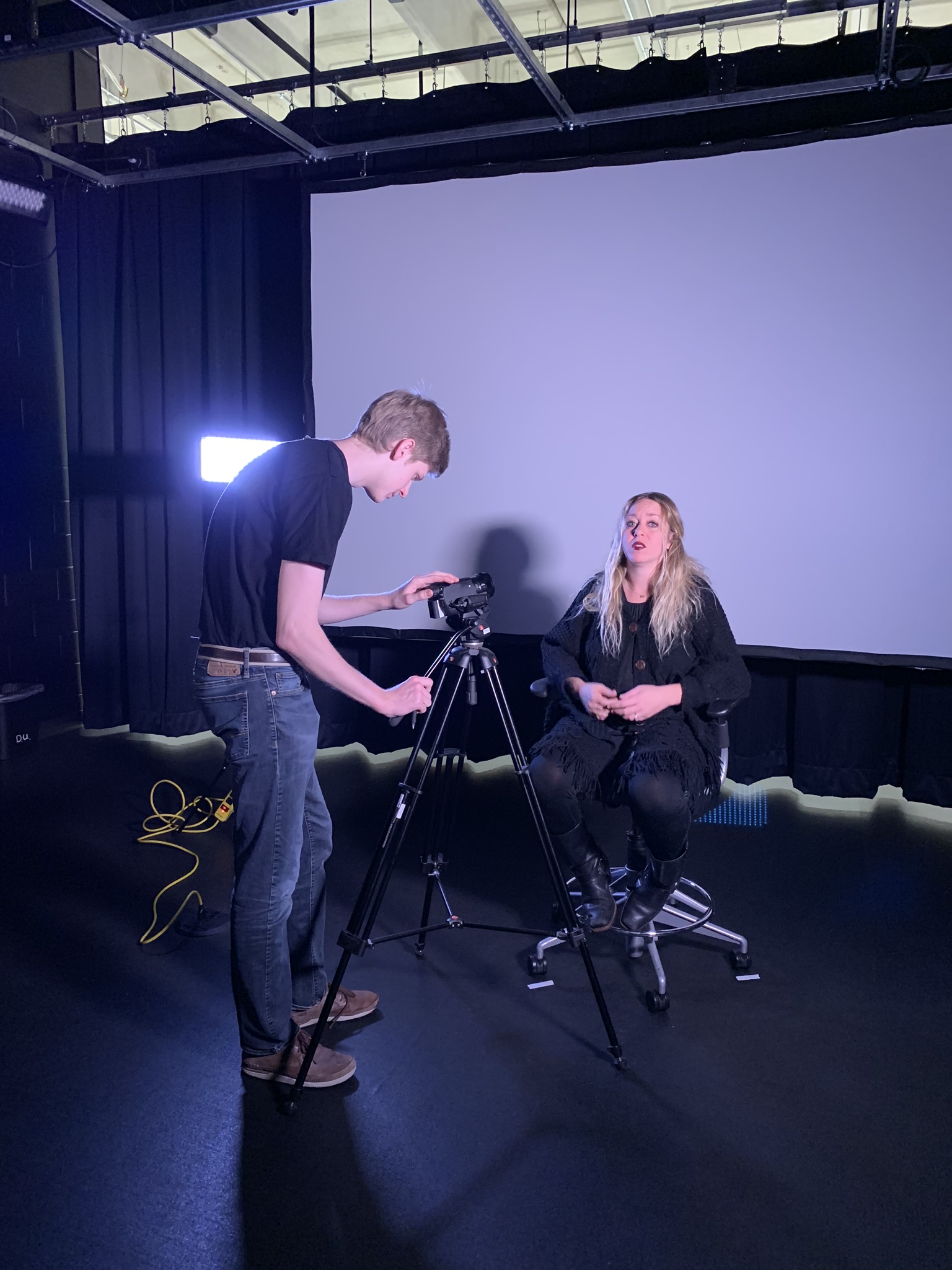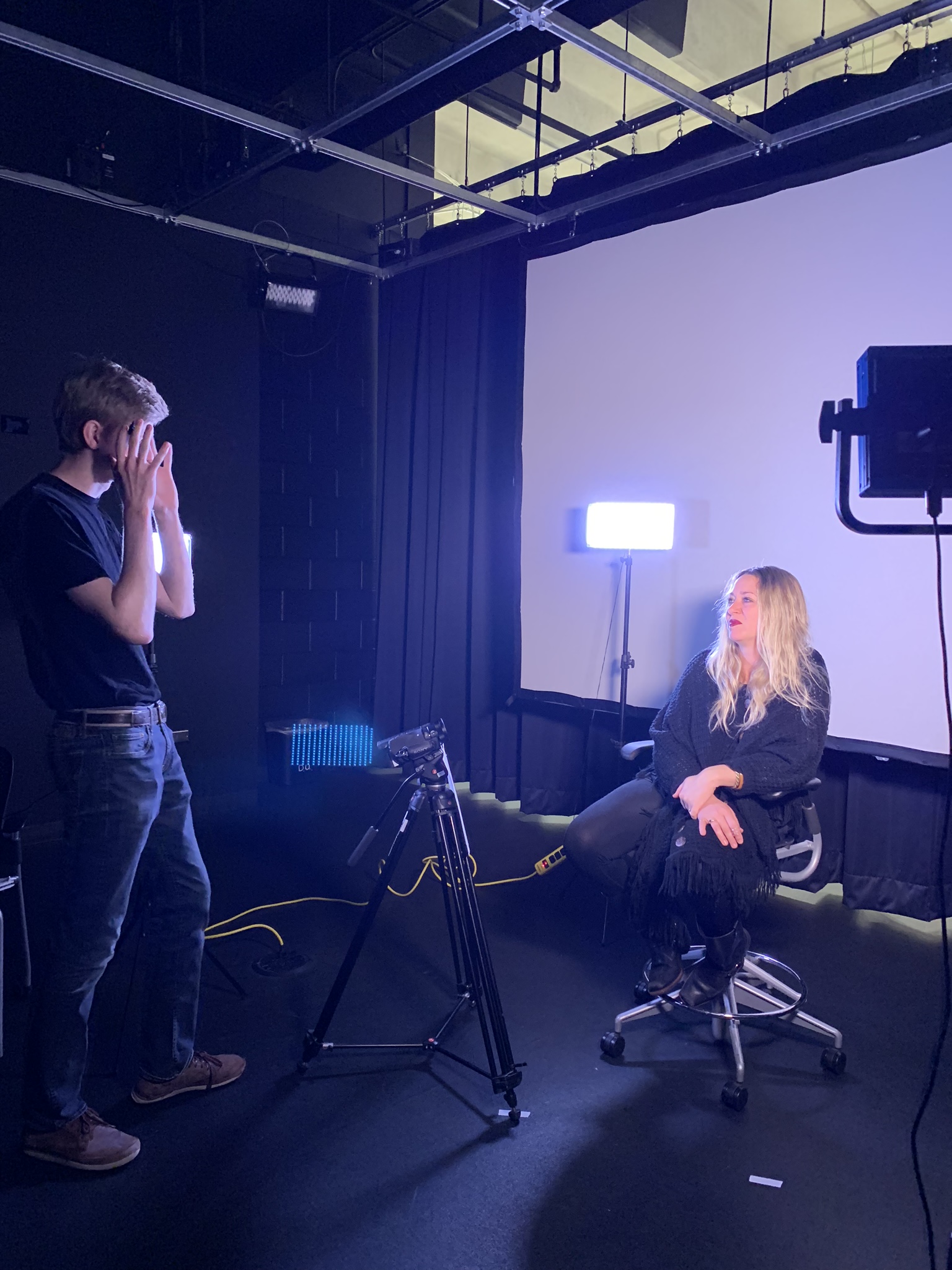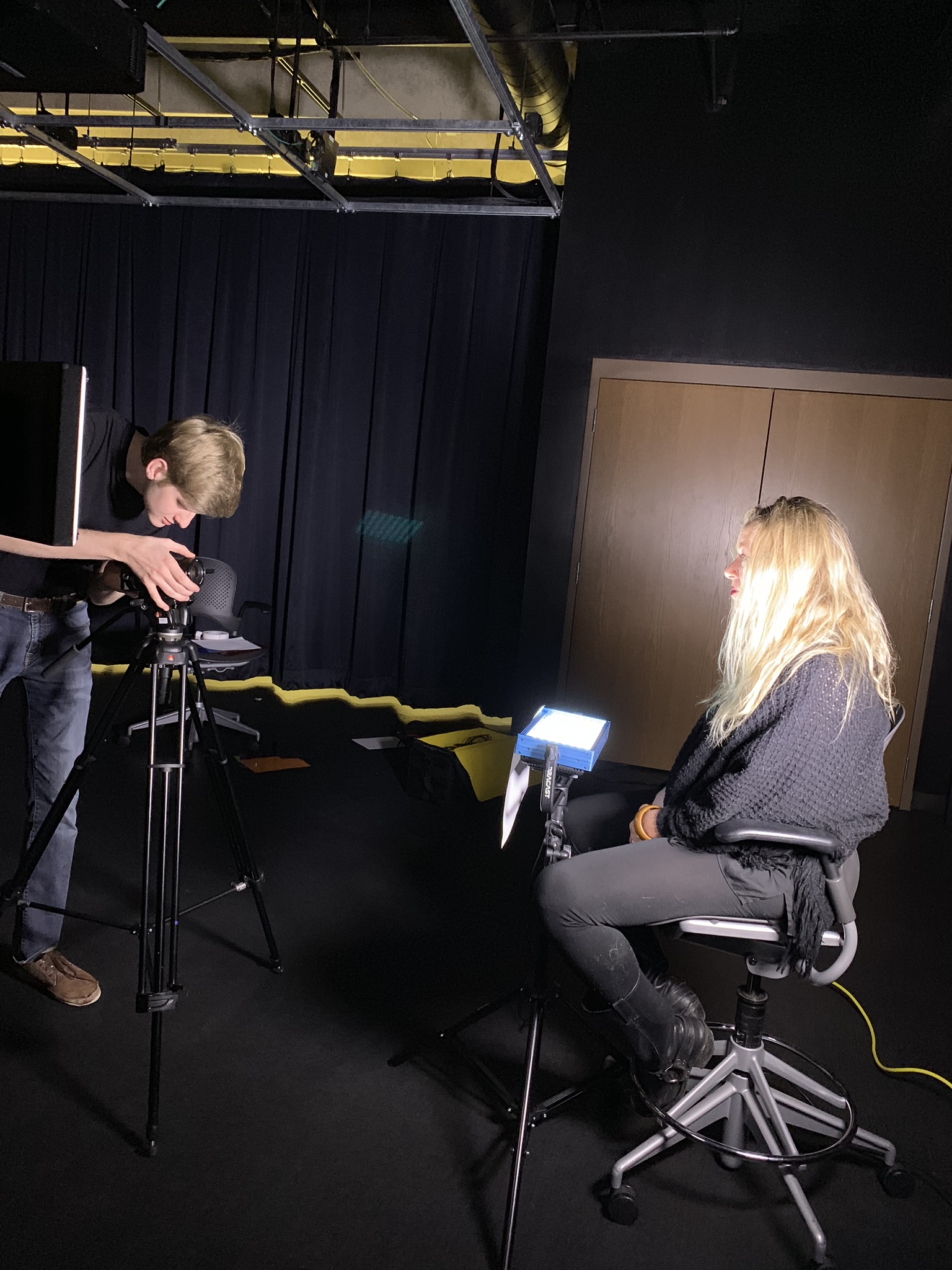Remembering Your Outline
Expressive Light and sound
Remembering Your Outline is primarily a meditation on the phrase, “Oh, he’s in the middle of putting things together and organizing himself.” For proper functioning in society, there has to be an oscillation between a performative external self, and an emotional internal self. The tragedy of the modern age is the increasingly large gap between those two people. The carrying of trauma, and in turn the mental health of a person, is ignored in favor of fitting into social expectations.
The process of direction started with asking Emilee, my talent, to tell me a story about something in her life. After she tells me the story, I summarize it into a short phrase, which she is instructed to repeat in her head like a mantra, calling to mind all of the emotions associated with that memory. I started with some humorous stories, getting footage of genuine laughter. Then, I moved to fear, sadness, and deeply personal stories, the history the laughter on the surface is covering up. Whatever the feeling of her story, the lighting was adjusted to emphasize it. After a first “raw” take of the emotion, slight direction was given for interactions with the light, such as covering her face, leaning back, or bringing together her hands. It was important to make these interactions with the light small enough that they would not distract from the emotions onscreen.
In editing, the order of shots was only slightly altered from the way they were created. The laughter was interspersed at the beginning, middle, and end, marked by long fades to have moments of composition where the surface and below are on screen simultaneously. This highlights that the audience is seeing the true fragmentations of self that are being organized for the external performance. While this is one case study of it, the stage calls everyone as an actor. The critique is not in the action of doing so, it is in the larger requirement that they will.
Sounds were chosen for their ability to be unsettling or to convey the idea. A lot of them are atmospheric, but in every shot something is synchronized to what is happening on screen, creating a sense of grounding. For example, pressure valve releases play while the face of Emilie, the talent, was happy and laughing, but they are sped up to create unease and machinery to the laughter. Sounds of electric motors, buzzing, and scratching, which are supposed to represent the artificiality of the external self, are also included atop the laughing. Furthermore, low bass tones or distant train horns were used to create a sense of moodiness throughout the piece. This is combined with different tones of Tibetan singing bowls, which are used to create a soundtrack without being overly musical or distracting. Because of the process of memory-inspired acting, which was described in more detail in the creative statement for the visuals, some sounds were chosen because of the memory that was called to mind on screen. Examples of this are the breathing noises while she looks fearful, because that fear is inspired by a bad sexual memory. Sounds are also sped up or slowed down for the sake of abstracting them, primarily to avoid recognizably or standing out too much in the mix. Sometimes this also conveniently helps sync a sound to a movement that would not be synchronized otherwise, such as the rustling grass with her fingers. Overall, these are sounds intended to create unease and bolster the emotions on-screen. Sound has a rich ability to set a mood, which here is used to either shatter the false happiness, or wallow in the emotional reality.




